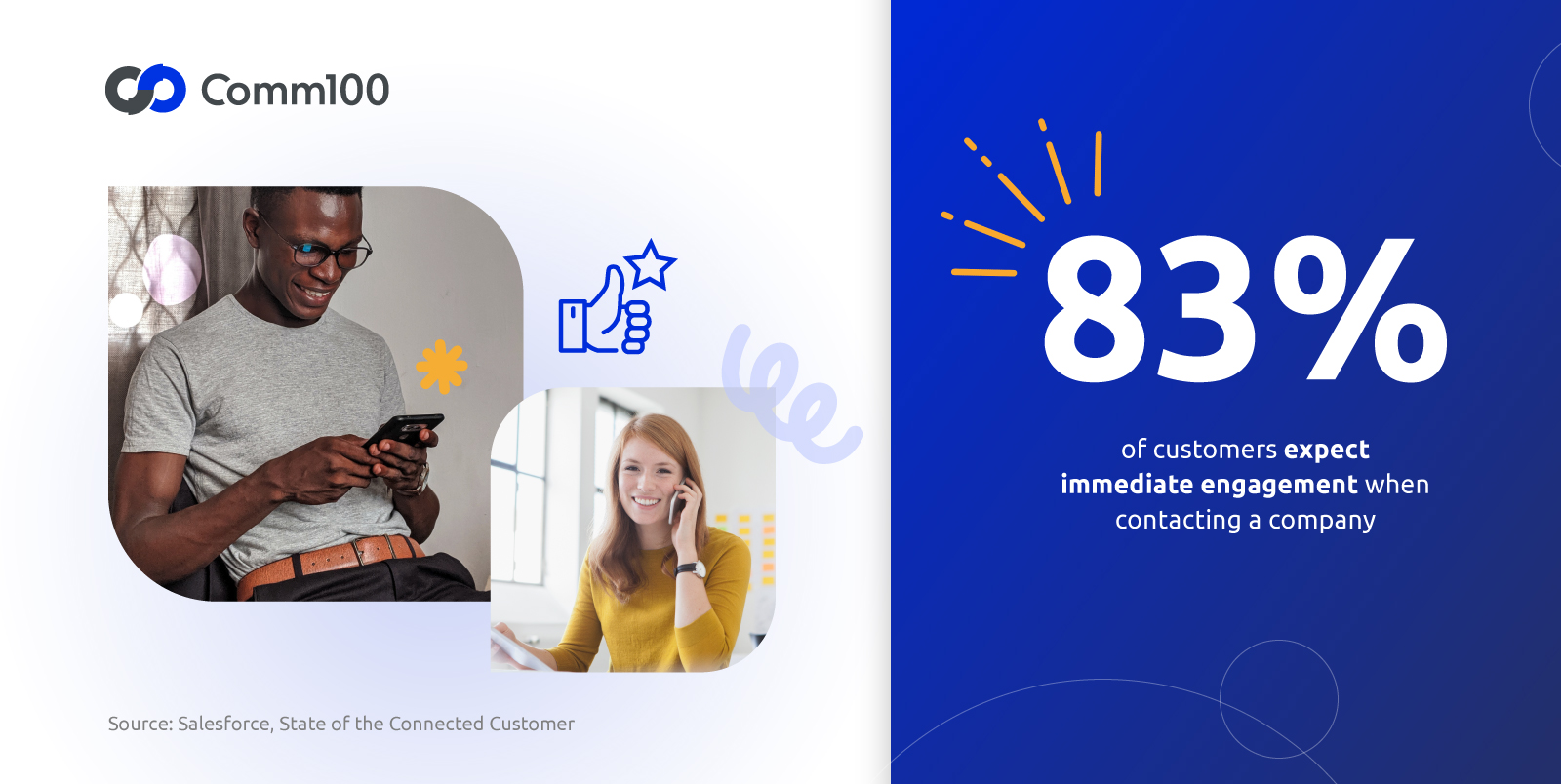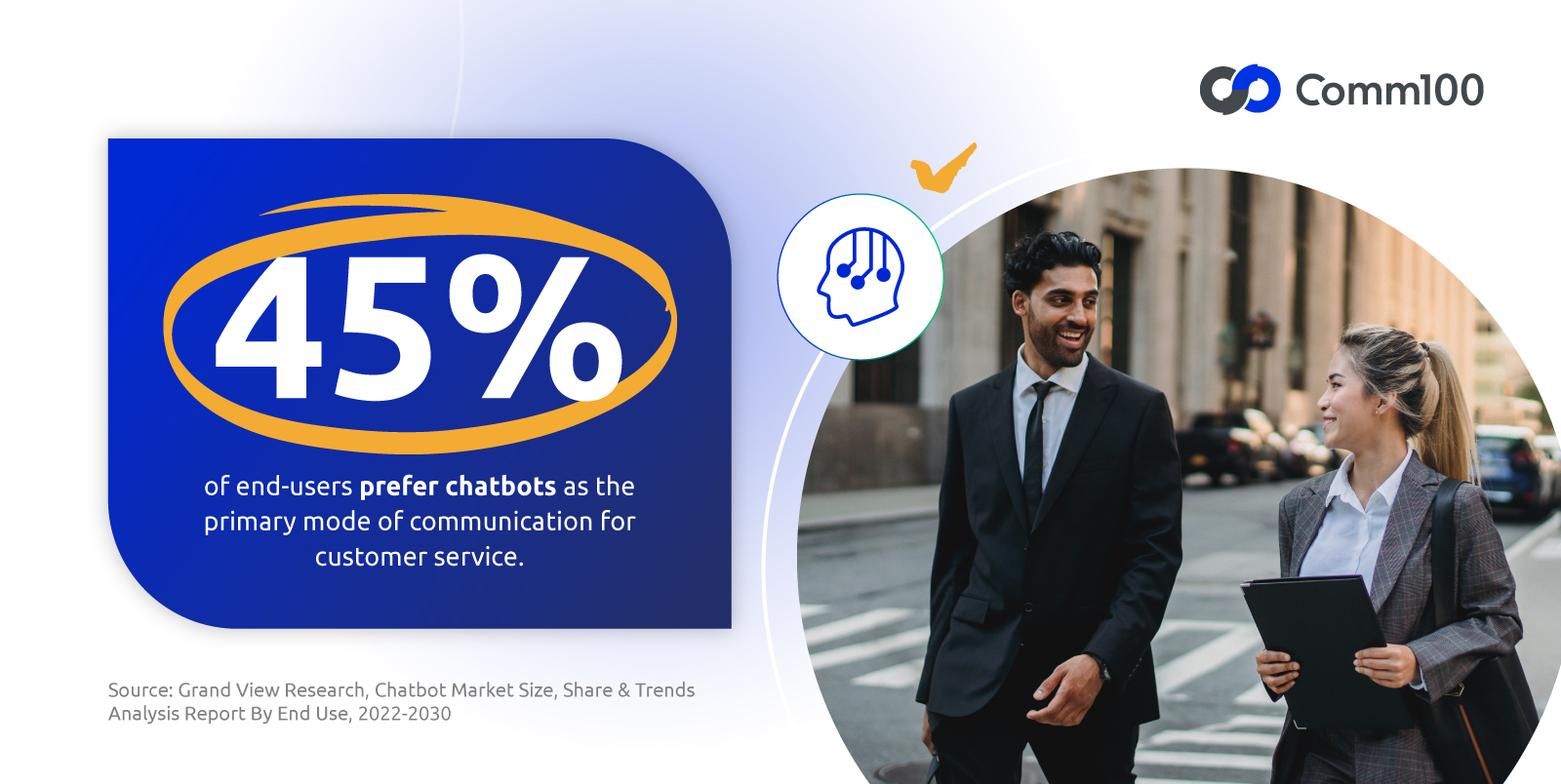🚀 It’s live! Access exclusive 2025 live chat benchmarks & see how your team stacks up.
Get the data🚀 It’s live! Access exclusive 2025 live chat benchmarks & see how your team stacks up.
Get the dataIn a world where immediacy and personalization have become the cornerstones of brand communication, the realm of customer service is undergoing a revolutionary transformation. This transformation is rooted deeply in the integration of advanced automation and artificial intelligence.
The necessity to introduce automation into customer service operations is becoming stronger by the month. But why? Why should businesses lean into automation? How does it benefit organizations and customer experience? And what are the first steps for those at the beginning of this journey, and what advanced strategies can those who have already adopted automation employ to scale new heights?
Lastly, but crucially, this guide will also explore how teams can strike the perfect balance between the efficiency and scalability of automation and the necessity for human touch.

Automation in customer service is a concept that is constantly evolving with the rapid advancements in technology. At its core, it involves using software, AI, and other digital tools to automate customer service processes, thereby enhancing efficiency and customer experience.
In the simplest terms, automation in customer service is about leveraging technology to handle routine tasks without human assistance. This includes everything from answering frequently asked questions to routing customer inquiries to the appropriate department or agent. The goal is to streamline operations, reduce response times, and free up human agents to increase the team’s capacity.
Here are some of them most effective automation technologies being used by customer service and support teams today:
Powered by NLP (Natural Language Processing) technology, these bots are designed to handle an organization’s frequent queries by providing predefined responses that are highly accurate and consistent. By automating a high volume of common queries, this chatbot reduces agent workload and increases support capacity. NLP chatbots can also be connected to core systems, allowing them to process payments, check inventory, update data, and much more.
Using Generative AI & NLU (Natural Language Understand) technology, Generative AI chatbots deliver dynamic, human-like messaging to engage in varied customer conversations. The best Gen AI bots also automatically index website & company content to ensure they only deliver helpful & accurate answers, avoiding hallucinations that can deliver incorrect information. They can also be launched within a couple of hours with no coding knowledge and require very little maintenance.
Voice chatbots communicate with customers via speech through digital voice and telephony channels. They automate voice-based interactions using speech recognition and synthesis to communicate with customers. Because voice bots can handle unlimited simultaneous conversations, customers receive immediate responses and agent query volume is decreased.
Agent Assist supports live agents by monitoring conversations in real-time and suggesting appropriate responses that the agent can send to the customer. This reduces the time agents spend hunting for information, giving them more time to focus on resolving inquiries.
Automated ticketing systems manage and route customer support tickets automatically based on predefined criteria. This streamlines the ticket handling process, ensuring that customer issues are addressed efficiently and by the most suitable agent.
By integrating these automation tools, businesses can significantly enhance their customer service capabilities, ensuring that they meet the rising expectations of modern consumers. The key lies in not only deploying these technologies but also in optimizing them to work in harmony with human agents, creating the perfect human-bot harmony. More on this in chapter 4.

Embracing automation in customer service is far more than just following a trend; it’s a strategic imperative in today’s digital-first world. The customer service industry has been transformed by automation and AI and continues to be as this technology is continuously added to and improved.
Automation in customer service elevates the customer experience, while also improving operational efficiency and agent experience. Every party benefits – so here’s a deeper look into why every organization should be leaning into automation.
The customer service industry is undergoing rapid transformation, propelled by AI advancements and shifting consumer behaviors. The digital revolution has altered the landscape of customer interactions. Here are some of the key changes that are affecting businesses:


Leaning into automation is not just about keeping up with technological trends; it’s about strategically adapting to a new era of customer service. By leaning into automation, businesses can not only meet but exceed the modern customer’s expectations, positioning themselves as forward-thinking and customer-centric in a competitive market.

If you are yet to properly introduce automation into your customer service operations and most of your processes and interactions are still manual, then these are the first steps and technologies you should adopt:
Step 1 – Identify opportunities
Step 2 – Implement automation solutions
If you offer ticketing support, then adding automation to the system is a perfect first step. To start, set up your ticketing operations to automatically update case status so your agents don’t have to. With Comm100’s automated ticketing system, you can send automated responses to acknowledge receipt of a support request and provide estimated response times to help manage customer expectations.
To streamline your operations, adopt technology that lets you automatically assign chats and tickets to specific teams or departments. Better still, with Comm100 smart routing you can auto-direct chats to designated agents based on experience and skill, as well as prioritize chats based on urgency or customer importance.
The best chatbot to start off your automation journey is one based on Generative AI technology like Comm100 Generative Answers Chatbot. This bot is designed for ease and speed of deployment. As well as being built on the latest technology and vast LLMs, it also automatically indexes your website & company content so you don’t have to create any new bot content. This is why it only takes two hours to set up with no technical experience. The bot can manage common queries and engage in limitless conversations.
Step 3 – Measure and optimize:
If you have already begun to add automation into your operations but know there’s so much more you could be doing to improve efficiency, then here are some suggestions for the next steps.
Step 1 – Adopt an advanced AI chatbot
Comm100 Custom Answers Chatbot can manage 80%+ of all queries and perform tasks through flexible integrations with your core systems. This bot provides predefined responses to frequently asked questions so you have greater control, high accuracy, and can deliver personalized experiences.
Step 2 – Implement AI-powered agent automation
Step 3 – Continuous improvement:
In both cases, the goal is to create a customer service ecosystem where automation enhances efficiency without losing the personal touch that customers value. This approach doesn’t only improve operational efficiency, but it also drives customer satisfaction and loyalty in the long run. Let’s explore this human-bot balance more in the next chapter.

As we embrace the technological advancements in customer service, it’s crucial to address the concept of human-bot harmony. This balance is not just a luxury; it’s a necessity for businesses striving for excellence in customer interactions.
Human-bot harmony refers to the seamless balance of automation with human agents in customer service. It’s about leveraging the efficiency and scalability of automation while maintaining the empathetic and complex problem-solving abilities of human agents.
While we’ve proved the undeniable benefits of automation in this guide, it can’t and shouldn’t function alone. Human engagement is still a vital aspect of student support. Certain complex and sensitive issues often require human empathy, creativity, and complexity that even the most advanced AI cannot provide.
Here are four key aspects to consider when achieving this balance:
This balance is at the heart of modern customer service. It’s about creating a balance where technology enhances human capabilities, leading to a more efficient, effective, and satisfying customer service experience.
Introducing automation into your customer service operations is essential. From the streamlined efficiency of AI-driven chatbots to the empathetic touch of human agents, the landscape of customer service is evolving into a more responsive, efficient, and customer-centric domain.
Now is the time to embrace this transformation. Whether you’re taking your first steps into automation or looking to deepen your existing strategies, you can leverage Comm100’s suite of automation tools to improve your operations and achieve the perfect balance of human and bot engagement.
There’s a lot more where this came from!
Get our monthly customer service news and best practices update delivered to your inbox.

Article by
Kate is the Content Marketing Specialist at Comm100. She has extensive experience in content creation for technology companies across the world, including the UK, Australia and Canada. She specializes in B2B messaging, branding and soccer trivia.